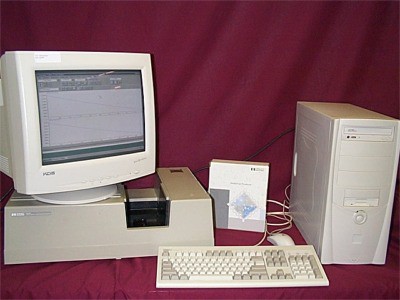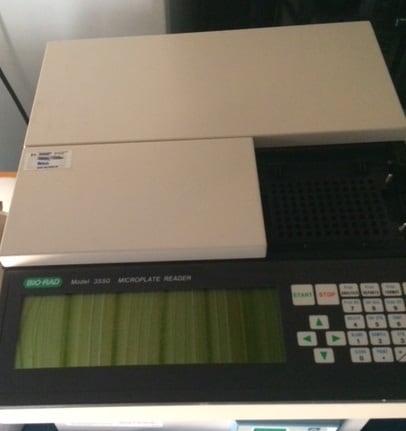- Your cart is empty
- Continue Shopping

Product
Microplate Reader, Molecular Devices Gemini, Refurbished
The Gemini Microplate Spectrofluorometer can perform a variety of fluorescent applications as well as some time-resolved fluorescent assays. The extreme flexibility and high sensitivity of the Gemini make it appropriate for applications within the fields of biochemistry, cell biology, immunology, molecular biology, and microbiology.
Gemini is controlled by an external computer running SoftMax ®Pro software which provides integrated instrument control, data display, and statistical data analysis. The Gemini XS cannot be operated without the computer and SoftMax Pro software.
The Gemini Microplate Spectrofluorometer can perform a variety of fluorescent applications as well as some time-resolved fluorescent assays. The extreme flexibility and high sensitivity of the Gemini make it appropriate for applications within the fields of biochemistry, cell biology, immunology, molecular biology, and microbiology.
Gemini is controlled by an external computer running SoftMax ®Pro software which provides integrated instrument control, data display, and statistical data analysis. The Gemini XS cannot be operated without the computer and SoftMax Pro software.
With the introduction of the SPECTRAmax GEMINI, it is no longer necessary to
use bandpass filters or to settle for suboptimal wavelength compromises. The
GEMINI contains both excitation and emission monochromators such that any
combination of wavelengths between 250 and 850 nm is easily obtained. Given
the flexibility, the user naturally wishes to choose the best possible combination.
For a particular fluorophore, the choice will depend on the location of its
excitation and emission maxima and the separation between them (Stokes’ shift).
If the two wavelengths are far apart the choices are easy: the excitation and
emission maxima are selected, along with an appropriate cutoff filter to remove
residual excitation illumination and optimize sensitivity. If the two wavelengths
are close together, the selection/optimization process is less straightforward,
because of the need to minimize excitation light carryover. This application note
gives a basic procedure for optimization of excitation and emission wavelengths
of the SPECTRAmax GEMINI microplate spectrophotometer. An example is
given for application of the procedure to a fluorophore with a relatively large
Stokes’ shift (quinine).















